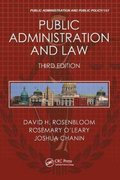1.1 Asymptotics of transformations 1. Suppose that VT(o - 2#) " N(0, 1). Find the limiting distribution of T(1 - cos d). 2. Suppose that T(v -2x) _ / (0, 1). Find the limiting distribution of T sin v. 3. Suppose that 70 - 3. Find the limiting distribution of Tlog e.1.2 Asymptotics of rotated logarithms Let the positive random vector (Un, V,)' be such that Wup Way as n - co. Find the joint asymptotic distribution of In Un - In Vn In Un + In Vn. What is the condition under which In Un - In Vn and In Un + In V, are asymptotically independent?1.3 Escaping probability mass Let X = {x1, ..., In} be a random sample from some population of a with E [x] = / and V (x] = 02. Let An denote an event such that P{A,} =1 - -, and let the distribution of An be independent of the distribution of r. Now construct the following randomized estimator of /: In if An happens, in = n otherwise. (i) Find the bias, variance, and MISE of /,. Show how they behave as n - co. (ii) Is ji, a consistent estimator of u? Find the asymptotic distribution of vn(/, - /). (iii) Use this distribution to construct an approximately (1-o) x 100% confidence interval for u. Compare this CI with the one obtained by using a, as an estimator of p.1.4 Asymptotics of t-ratios Let {xi}" , be a random sample of a scalar random variable a with E(x] = (, V(x] = 0, E[(x - #) ] = 0, E[(x - /) ] = T, where all parameters are finite. (a) Define Th = =, where 9:1 HI TE- n S ( x - 2 )?. i=1 n Derive the limiting distribution of vn7, under the assumption / = 0. (b) Now suppose it is not assumed that / = 0. Derive the limiting distribution of Vn ( In - plim In) Be sure your answer reduces to the result of part (a) when a = 0. (c) Define Rn = 91 1 HI where n is the constrained estimator of of under the (possibly incorrect) assumption # = 0. Derive the limiting distribution of VT Rin - plim Rn) for arbitrary a and of > 0. Under what conditions on / and o' will this asymptotic distrib ution be the same as in part (b)?1.5 CreePing bug on simplex I{ii-1:.'rnaider a positive {my} orthant R1 and its unit simplex, i.e. the line sengnt 1 + y = 1, :c 2 , 1: I: I). Take an arbitrary natural number i: E H. Imagine a. bug starting creeping From the origin {my} = ((1,0). Each semud the bug goes either in the positive a: direction with probability p? or 'm the positive y direction with probability 1 p, each the covering distance % Evidently, this way the bug reaches the simplex in 1': seconds. Suppose it arrives there at point {a}, lie]- Now let i: :r so, i.e. as if the bug shrinks in size and physical abilities per seeond. Determine (a) the prbhit'y limit. of {Emilia}; {b} the rate of convergence; {c} the asymptotic distribution of [whys]











